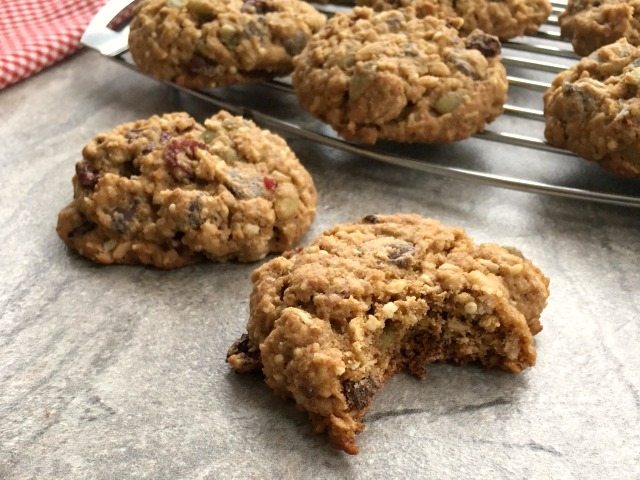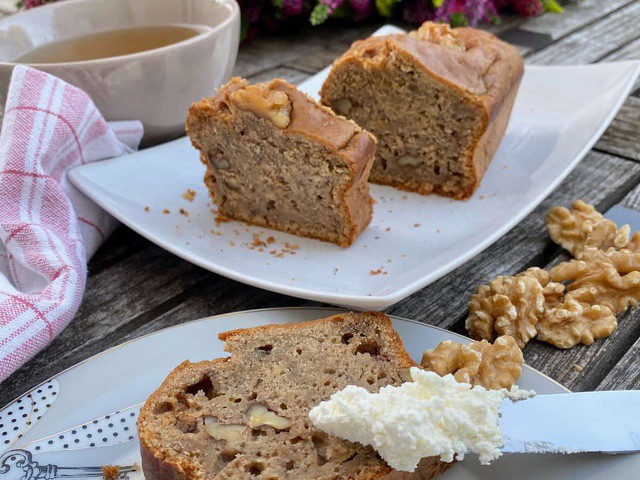Baking is often associated with indulgence—fluffy cakes, rich brownies, and buttery cookies that satisfy the soul. However, for those with dietary restrictions, baking can be challenging. Whether you’re dealing with gluten intolerance, dairy allergies, or trying to cut back on sugar, finding delicious alternatives that don’t compromise on flavor or texture is crucial. Luckily, you can still create delightful treats; for instance, you can order Nangs with NosBoss to elevate your baking experience with whipped cream or foams that complement your delicious desserts. The good news is that with the right ingredients and techniques, baking for special diets can be just as enjoyable and rewarding.
In this article, we’ll explore gluten-free, dairy-free, and low-sugar baking options, offering practical tips and recipes that ensure you can still enjoy your favorite baked goods, no matter your dietary needs.
Gluten-Free Baking: Understanding the Basics
Gluten, a protein found in wheat, barley, and rye, gives baked goods their elasticity and chewiness. For people with celiac disease or gluten sensitivity, even small amounts of gluten can cause severe discomfort. Luckily, gluten-free baking has come a long way in recent years, with a variety of gluten-free flours and mixes available.
Popular Gluten-Free Flour Alternatives
- Almond Flour: Made from ground almonds, almond flour is a popular choice in gluten-free baking due to its rich, nutty flavor and moist texture. It’s perfect for cakes, cookies, and even bread. However, because it’s higher in fat, it can make baked goods more dense, so it’s often used in combination with other gluten-free flours.
- Coconut Flour: Coconut flour is highly absorbent, so you’ll need to adjust your liquid ratios when using it. It imparts a subtle coconut flavor and works well in cakes, muffins, and cookies. A little goes a long way—typically, you’ll only need about 1/4 cup of coconut flour for every cup of regular flour.
- Rice Flour: White or brown rice flour is a staple in gluten-free baking. It has a neutral flavor and can be used in various baked goods. It’s best when combined with other gluten-free flours to avoid a gritty texture.
- Oat Flour: Made from ground oats, oat flour adds a chewy texture and mild flavor to baked goods. Be sure to use certified gluten-free oats to avoid contamination with gluten. Oat flour works particularly well in cookies, muffins, and quick breads.
- Gluten-Free All-Purpose Flour: Many brands offer pre-made gluten-free flour blends that mimic the properties of wheat flour. These blends often contain a mix of rice flour, potato starch, and xanthan gum (which acts as a gluten substitute to provide structure).
Tips for Successful Gluten-Free Baking
- Add a binder: Gluten-free flours lack the elasticity that gluten provides, so using a binder is key to preventing crumbling. Common binders include xanthan gum, guar gum, or psyllium husk. Some recipes may also call for extra eggs.
- Adjust liquid ratios: Gluten-free flours can be more absorbent than wheat flour, so you might need to increase the amount of liquid in your recipe.
- Don’t overmix: Unlike traditional wheat-based batters, gluten-free batters don’t require much mixing. Overmixing can lead to dense and tough results.
Dairy-Free Baking: Substitutes and Strategies
Dairy is a key ingredient in many baked goods, providing moisture, flavor, and richness. However, those with lactose intolerance, dairy allergies, or who follow a vegan diet need to find alternatives. Thankfully, there are many dairy-free substitutes that can mimic the properties of butter, milk, and cream without sacrificing taste.
Common Dairy-Free Substitutes
- Plant-Based Milks: Almond milk, coconut milk, soy milk, and oat milk are all excellent dairy-free substitutes for cow’s milk. When substituting, use a 1:1 ratio. Coconut milk, in particular, can add a rich, creamy texture to baked goods, while almond milk is more neutral and versatile.
- Dairy-Free Butter Alternatives: There are many plant-based butter options available in stores, made from oils like coconut, olive, or sunflower. You can substitute these in the same quantity as regular butter. Alternatively, using coconut oil or even applesauce in certain recipes can work as a butter replacement.
- Coconut Cream: Coconut cream is a great substitute for heavy cream in recipes like pies or frostings. It’s rich and thick, and works well in both sweet and savory dishes.
- Vegan Yogurt or Sour Cream: For recipes calling for yogurt or sour cream, use a plant-based version made from almond, cashew, or coconut milk. These substitutes add moisture and tang, just like their dairy counterparts.
Tips for Successful Dairy-Free Baking
- Experiment with fats: When replacing butter, different fats behave differently at room temperature. Coconut oil is solid at room temperature, while olive oil remains liquid. Choose your substitute based on the texture you’re aiming for.
- Add moisture: Some dairy-free substitutes, like plant-based milks, can be less rich than cow’s milk. Adding an extra tablespoon of oil or a splash of extra liquid can help keep baked goods moist.
- Enhance flavor: Dairy-free baking can sometimes lack the richness that butter or milk provides. Consider adding a teaspoon of vanilla extract, cinnamon, or cocoa powder to enhance flavor.

Low-Sugar Baking: Sweetening Without the Guilt
Cutting back on sugar doesn’t mean you have to give up on delicious baked goods. There are many natural and artificial sweeteners available that can reduce the sugar content while still satisfying your sweet tooth.
Popular Low-Sugar Sweeteners
- Stevia: Stevia is a natural, zero-calorie sweetener derived from the leaves of the stevia plant. It’s much sweeter than sugar, so you’ll need to use far less (usually about 1/4 teaspoon of stevia for every 1 teaspoon of sugar). It works well in cookies, cakes, and muffins but can sometimes leave a slightly bitter aftertaste.
- Monk Fruit Sweetener: Monk fruit is another natural, zero-calorie sweetener that’s often blended with erythritol. It has a clean, sweet flavor and works well in most baked goods.
- Erythritol: This sugar alcohol has about 70% of the sweetness of sugar but contains very few calories. It’s great for baking since it caramelizes and browns like sugar. However, erythritol can have a cooling aftertaste, so it’s best when combined with other sweeteners.
- Coconut Sugar: Coconut sugar is a natural sweetener derived from the sap of coconut palms. While it’s not calorie-free, it has a lower glycemic index than white sugar, making it a popular choice for those looking to reduce sugar intake.
- Maple Syrup or Honey: For a more natural approach, you can use maple syrup or honey as a substitute for refined sugar. Both add moisture and sweetness, though they will affect the overall texture of your baked goods. Reduce other liquids in the recipe by 1/4 cup for every cup of liquid sweetener used.
Tips for Successful Low-Sugar Baking
- Adjust textures: Low-sugar sweeteners often don’t caramelize the same way sugar does. This can result in a less chewy texture, especially in cookies. Adding an egg white or a bit more fat can help counteract this.
- Use spices: When reducing sugar, increase the amount of flavor-enhancing ingredients like cinnamon, nutmeg, or vanilla extract to make up for the loss of sweetness.
- Be mindful of aftertastes: Some sugar substitutes, particularly stevia and erythritol, can leave an aftertaste. Experiment with combinations to find the right balance.
Final Thoughts
Baking for special diets doesn’t have to be complicated or limiting. With the right ingredients and a bit of experimentation, you can create gluten-free, dairy-free, and low-sugar treats that taste just as delicious as their traditional counterparts. Whether you’re baking for yourself or for loved ones with dietary restrictions, these tips and techniques will ensure that everyone can enjoy the sweet, comforting taste of home-baked goods.









